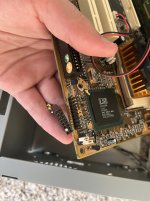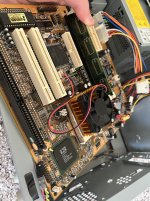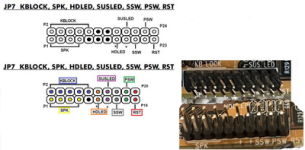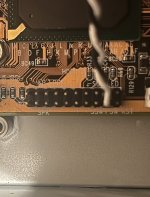gatewayrepairs1985
Experienced Member
Hi all,
I hope you had a wonderful holiday. Writing today as I have a motherboard (photo attached) with a Cyrix MediaGX processor. I have been able to find absolutely no information on the motherboard. It has no model markings anywhere on it. I have gotten it to POST with the traditional power connector (picture shown) but I want to put the motherboard in an ATX case. I have plugged in the ATX power connector, but then (as I show in the attached photos) I have no clue how to attach this connector from the power button on my case to the appropriate header on the motherboard. I’d like to find out more information about this board. And. how can I get this motherboard to boot with an ATX power supply? Thank you so much for any help you can provide! I appreciate it!
I hope you had a wonderful holiday. Writing today as I have a motherboard (photo attached) with a Cyrix MediaGX processor. I have been able to find absolutely no information on the motherboard. It has no model markings anywhere on it. I have gotten it to POST with the traditional power connector (picture shown) but I want to put the motherboard in an ATX case. I have plugged in the ATX power connector, but then (as I show in the attached photos) I have no clue how to attach this connector from the power button on my case to the appropriate header on the motherboard. I’d like to find out more information about this board. And. how can I get this motherboard to boot with an ATX power supply? Thank you so much for any help you can provide! I appreciate it!








